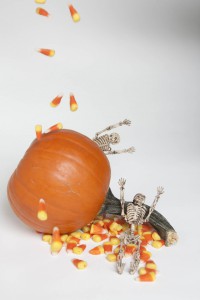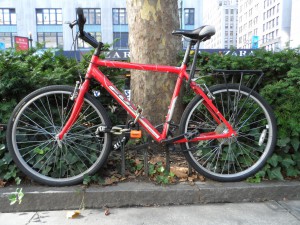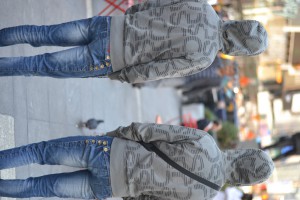- Irving Penn, On Assignment
There are many portraits like photograph in this exhibit. The composition deals with high contrast between black and white. The subject matter is people and hands and people in costumes. Majority of Penn’s photos are done in front of a restrained cloudy backdrop. Penn’s photos were at eye level and detailed texture to the hands and human body was emphasized. The overall exhibit is in a really white room where all the photographs were hung up on. It also gives a separation between all pieces of work because of the white walls and table tops. A physical impact this has is an odd and disruptive feel when we look at the images. It feels to me like you can become trapped into the images because of their use of strong effective contrast of black and white.
2. Nick Brandt, Across the Ravaged Land
The photographs here were of low contrast of black and white. The tones in black and white were very soft and not too strong. The subject matter in all photographs was Animals and a few was of humans. There is indeed a large amount of extensive depth of field which gives you the feeling of continuous space. There were a lot of negative spaces where we see the horizon between the ground and sky. There was many viewpoints in the photographs ranging from high, low, and eye level. We see the horizon as the horizontal line. There is also a repetitive composition in one of the photographs with the men standing up vertically straight with two elephant tusks on each side of themselves.
3. Robert Polidori, Versailles
In this set of photos, the subject matter involves interior space which consists of some depth of field where you can see down a corridor. The feeling of seeing these photographs is like walking into a painting of pure elegance. The effective part of Polidori’s work is taking some photographs of mirrors which would give a bigger view of the space the picture was being taken. It’s like a frame within a frame which worked quite well. There are strong vertical and horizontal lines in the compositions and the viewpoints were at eye-level. Many cdistinct colors were being used as well, such as violet and pink and blue and yellow.
4. Susan Derges, New Work
In Derges’s work, she photographs nature and it’s environment. She uses cool and warm colors of red, yellow, blue, and grey. Most of these colors look like a tint of its color. There is a shallow depth of field within each image. Some photographs of the moon would be at a low angle and some would be at a high angle shot for capturing water and then eye level would be to capture tree trunks and branches. What makes her work effective is her use of silhouettes and its relationship to its contrast against the color tinted background.
5. Olivio Barbieri, Alps-Geographies and People
The work here is depicting the subject matter of white space and people being in the most oddest places. I didn’t find this exhibit appealing because of its use of massive white space. Majority of images looked photo shopped. Having the large photographs on a neutral grey background made the images look boring. There is a strong use in contrast with white and sky blue. There is a focus of extensive depth of field.
6. Phillip Lorca Di Corsia, Hustlers
In this photographer’s work, the subject matter is people he paid to pose for him. There is an odd composition going on in the photos where the person would randomly stand somewhere in the area. There is a depth of field in the composition s. All images are at eye level. Majority of the focus would be on the person’s facial expression and/or of what they are wearing. The mood of what the images gives me is a sense of loneliness because each person is in a shot by themselves and it gives a sense of mystery to what they are wondering about and be like “where am I?”






